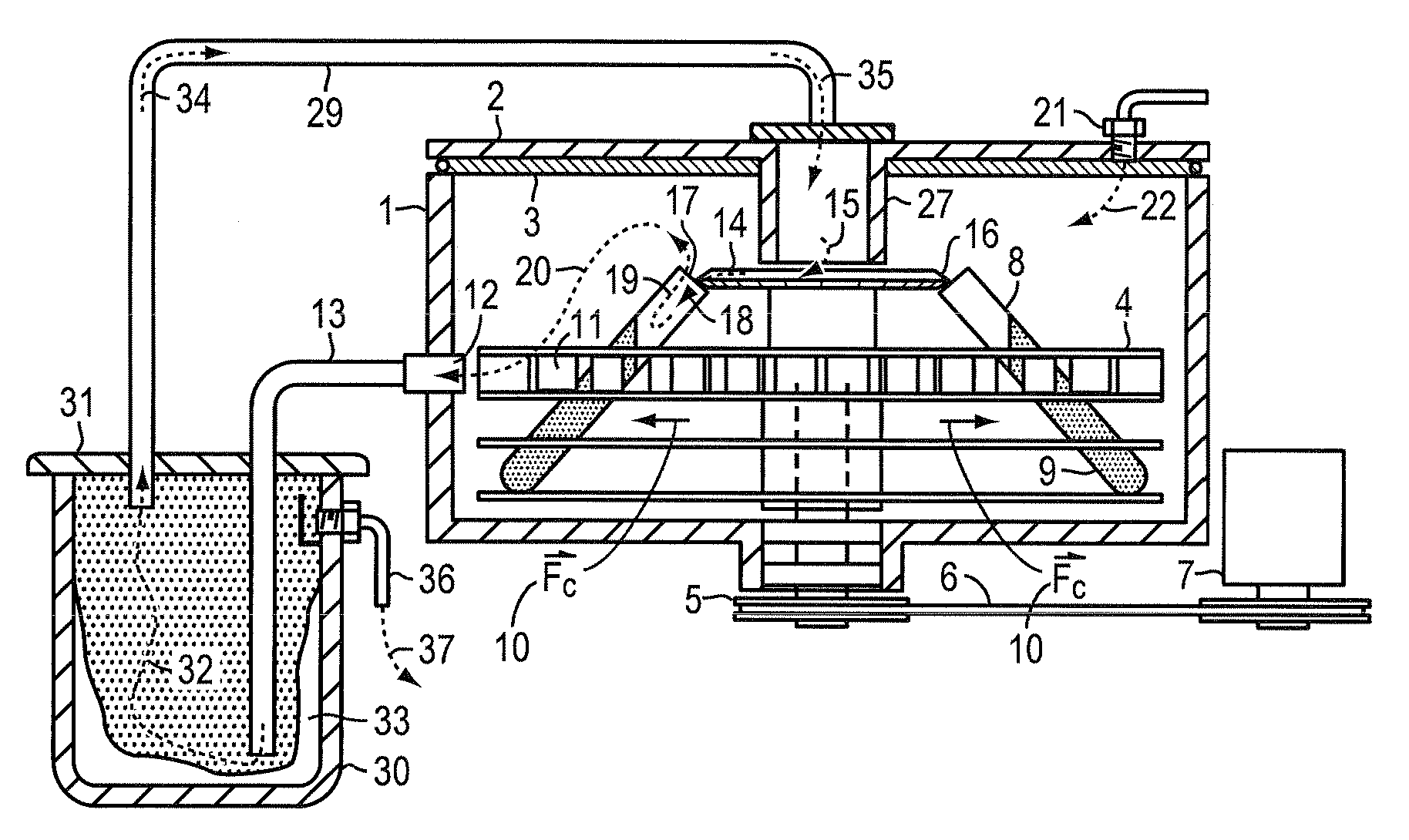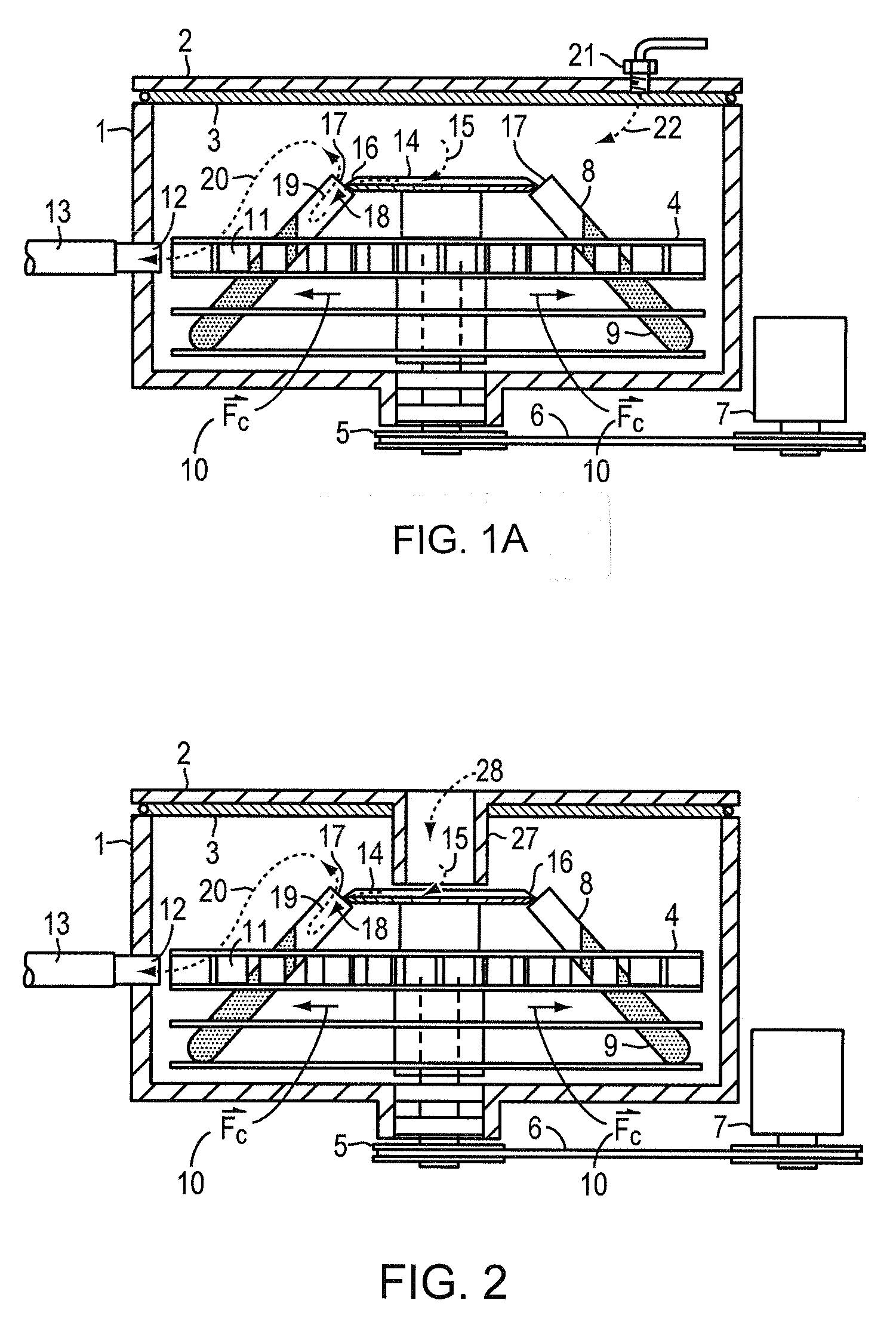Apparatus and method for drying a solid or liquid sample
a technology of apparatus and liquid sample, which is applied in the direction of separation process, centrifuge, furnace, etc., can solve the problems of high-performance systems working with water-containing solvents, time-consuming and expensive multi-step compound processing, and high cost of vacuum systems to buy and operate. , to achieve the effect of high blowing gas velocity
- Summary
- Abstract
- Description
- Claims
- Application Information
AI Technical Summary
Benefits of technology
Problems solved by technology
Method used
Image
Examples
Embodiment Construction
[0024]FIG. 1A shows a cross section of a typical centrifugal vacuum concentrator where a spinning carrier 4 is contained within a closed environment comprising an enclosure housing 1 and a cover 2 between which is fitted a gasket 3 to prevent solvent vapors from escaping into the user workspace. Carrier 4 is rotated at moderate speed, for example 1,500 RPM, by spindle, bearing, and pulley assembly 5 driven by V-belt 6 which is powered by motor pulley assembly 7.
[0025]Collection tube containers 8 are filled with the mixture 9 to be dried and inserted into sample carrier 4. The centrifugal force generated by the spinning sample carrier 4 holds the sample material 9 within the tube containers. This force maintains sample integrity in fraction collector applications by maximizing the capture rate of non volatile sample materials. In this drying application the yield and purity of non-volatile sample materials is preserved by the centrifugal force despite the relatively violent flow of a...
PUM
| Property | Measurement | Unit |
|---|---|---|
| Flow rate | aaaaa | aaaaa |
| Volume | aaaaa | aaaaa |
| Speed | aaaaa | aaaaa |
Abstract
Description
Claims
Application Information
 Login to View More
Login to View More - R&D
- Intellectual Property
- Life Sciences
- Materials
- Tech Scout
- Unparalleled Data Quality
- Higher Quality Content
- 60% Fewer Hallucinations
Browse by: Latest US Patents, China's latest patents, Technical Efficacy Thesaurus, Application Domain, Technology Topic, Popular Technical Reports.
© 2025 PatSnap. All rights reserved.Legal|Privacy policy|Modern Slavery Act Transparency Statement|Sitemap|About US| Contact US: help@patsnap.com



